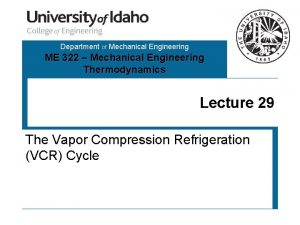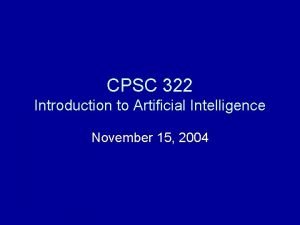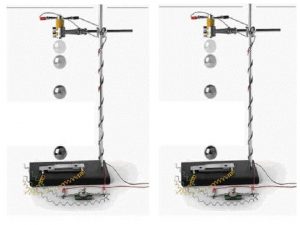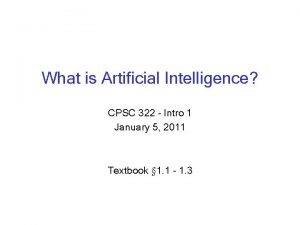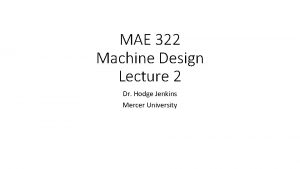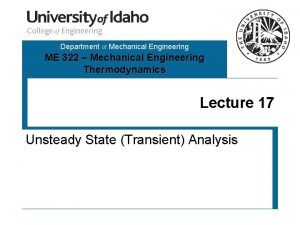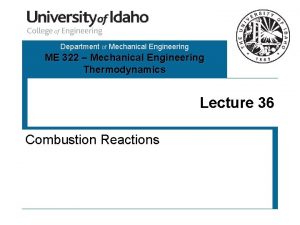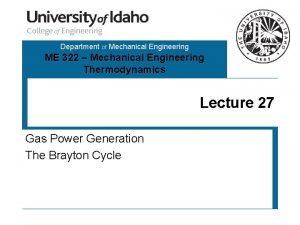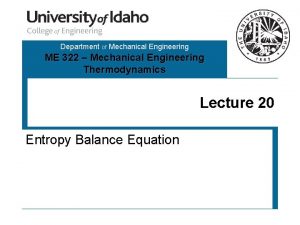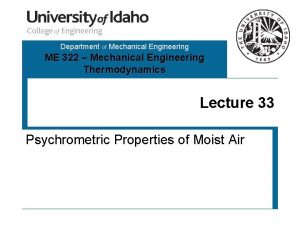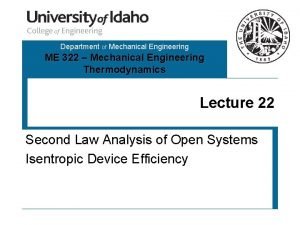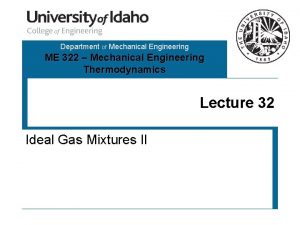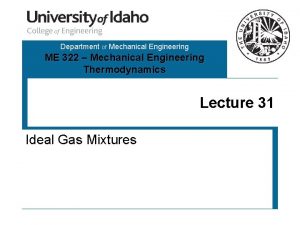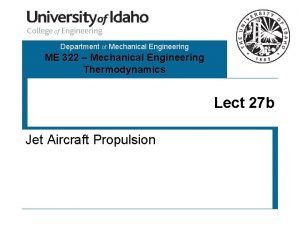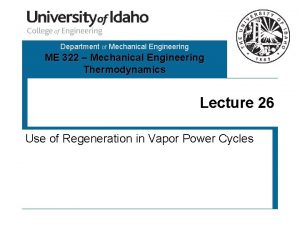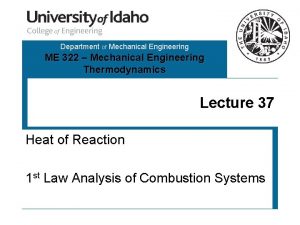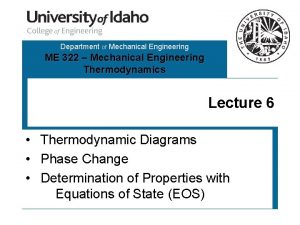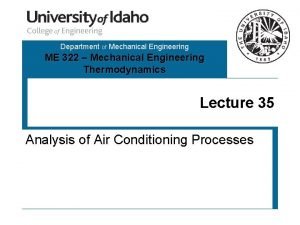Department of Mechanical Engineering ME 322 Mechanical Engineering














- Slides: 14

Department of Mechanical Engineering ME 322 – Mechanical Engineering Thermodynamics Lecture 29 The Vapor Compression Refrigeration (VCR) Cycle

VCR used for Cooling R Observation: The concept of an efficiency being greater than 100% makes people uneasy. Therefore, the conversion efficiency for a refrigerator is called the Cooling Coefficient of Performance (COPC). A refrigeration system that is used for cooling is called a refrigerator. 2

VCR used for Heating R Observation: The concept of an efficiency being greater than 100% makes people uneasy. Therefore, the conversion efficiency for a refrigerator is called the Heating Coefficient of Performance (COPH). A refrigeration system that is used for cooling is called a heat pump. 3

Theoretical Carnot Refrigerator For the Refrigeration cycle … R 4 For the Heat Pump cycle …

Terminology • Refrigeration cycle – The cycle is operating in a refrigeration cycle • The goal is to keep the cold space cold – Transfer heat from a low-temperature source • Heat pump cycle – The cycle is operating in a refrigeration cycle • The goal is to keep the hot space hot – Transfer heat to a high-temperature sink The words refrigeration or heat pump define the goal of the cycle. 5

What’s Inside? R 6

Refrigerant Properties Working fluid = Refrigerant • Two phase changes – Boiling (evaporator) – Condensing (condenser) • Low temperature boiling fluids 7

Refrigerant Naming Convention Most refrigerants are halogenated hydrocarbons. The naming convention adopted by ASHRAE is, R(a-1)(b+1)d = Ca. Hb. Clc. Fd c = 2(a – 1) – b – d Example: R 22 (R 022) H F C Cl 8 F chlorodifluoromethane

The Pressure-Enthalpy P-h Diagram 9

Refrigeration Cycle Analysis Performance 10

The Ideal VCR Cycle on the P-h Diagram 1 -2: 2 -3: 3 -4: 4 -1: 11 Isentropic compression Isobaric heat rejection Isenthalpic expansion Isobaric heat addition

Refrigeration Effect and Capacity Refrigeration Effect: Refrigeration Capacity: Refrigeration capacity is often expressed in tons of refrigeration. Definition … 1 ton of refrigeration is the steady state heat transfer rate required to melt 1 ton of ice at 32°F in 24 hours. 1 ton = 12, 000 Btu/hr = 3. 516 k. W 12

VCR Cycle Irreversibilities Pressure drop through the condenser Pressure drop through the evaporator 13 Isentropic efficiency of the compressor

Practical VCR Cycle SCT = Saturated Condensing Temperature DSC = Degrees of Subcooling = SCT – T 3 Subcooling increases the refrigeration capacity Superheating provides a dry vapor at the compressor inlet SET = Saturated Evaporating Temperature DSH = Degrees of Superheat = T 1 – SET 14

